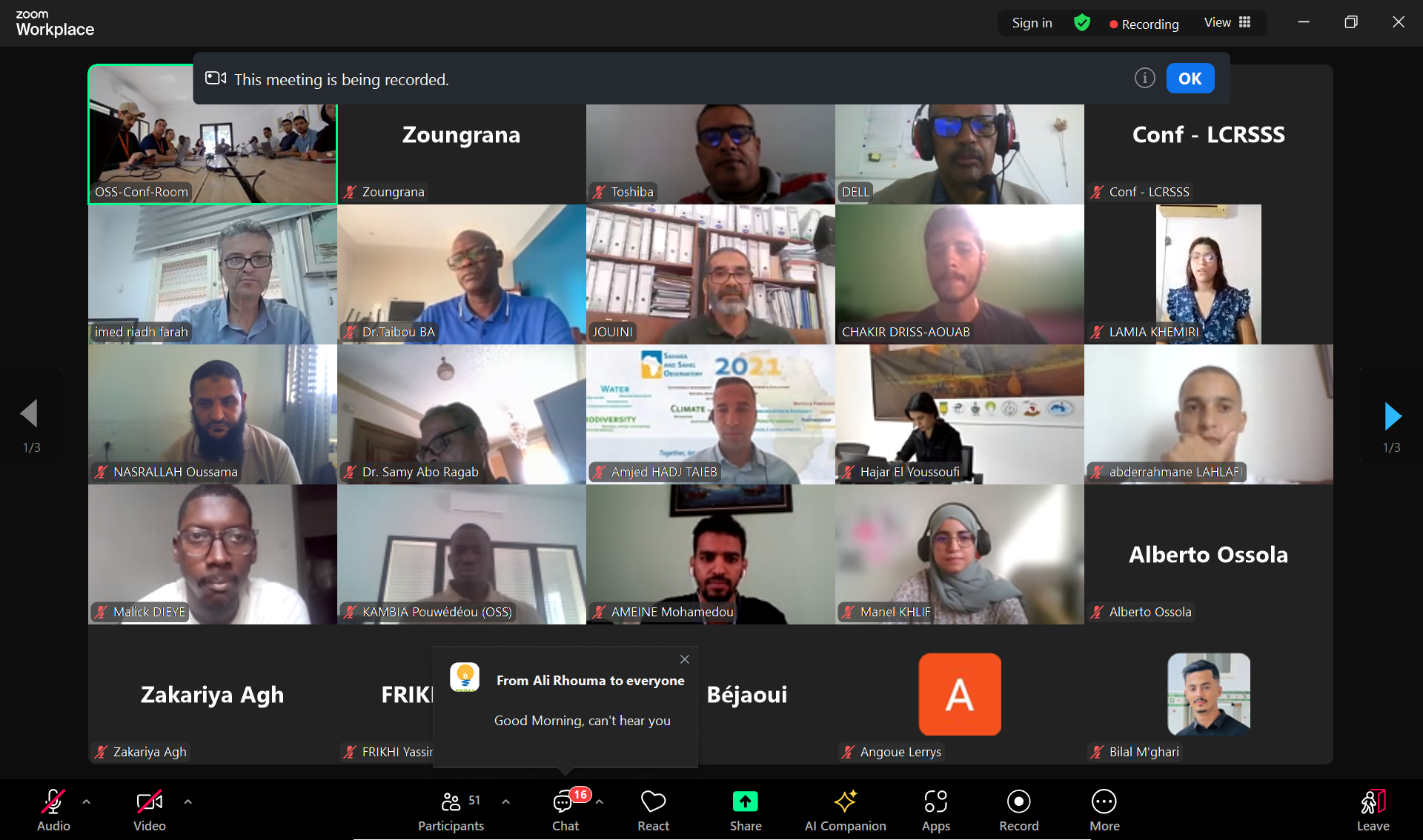
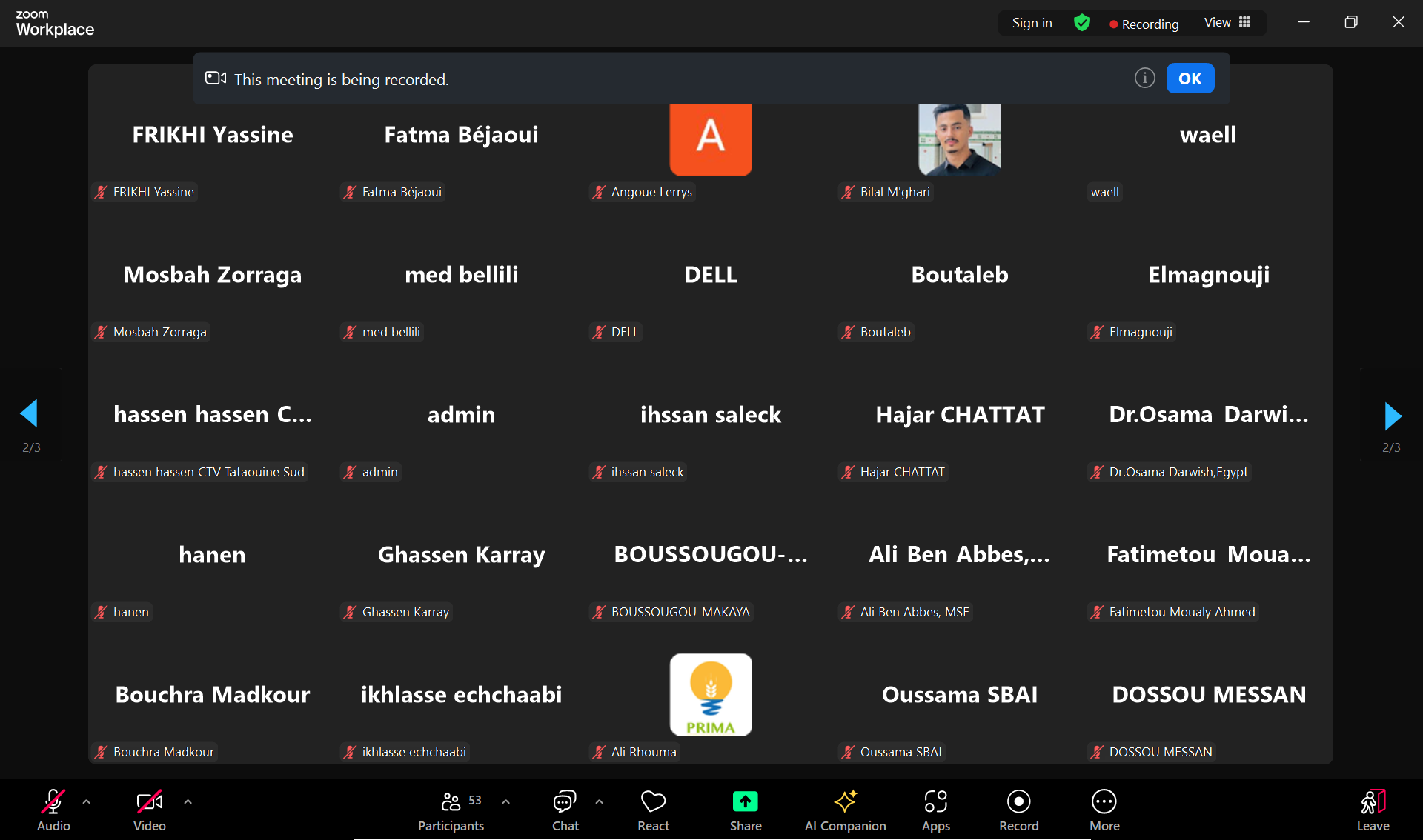
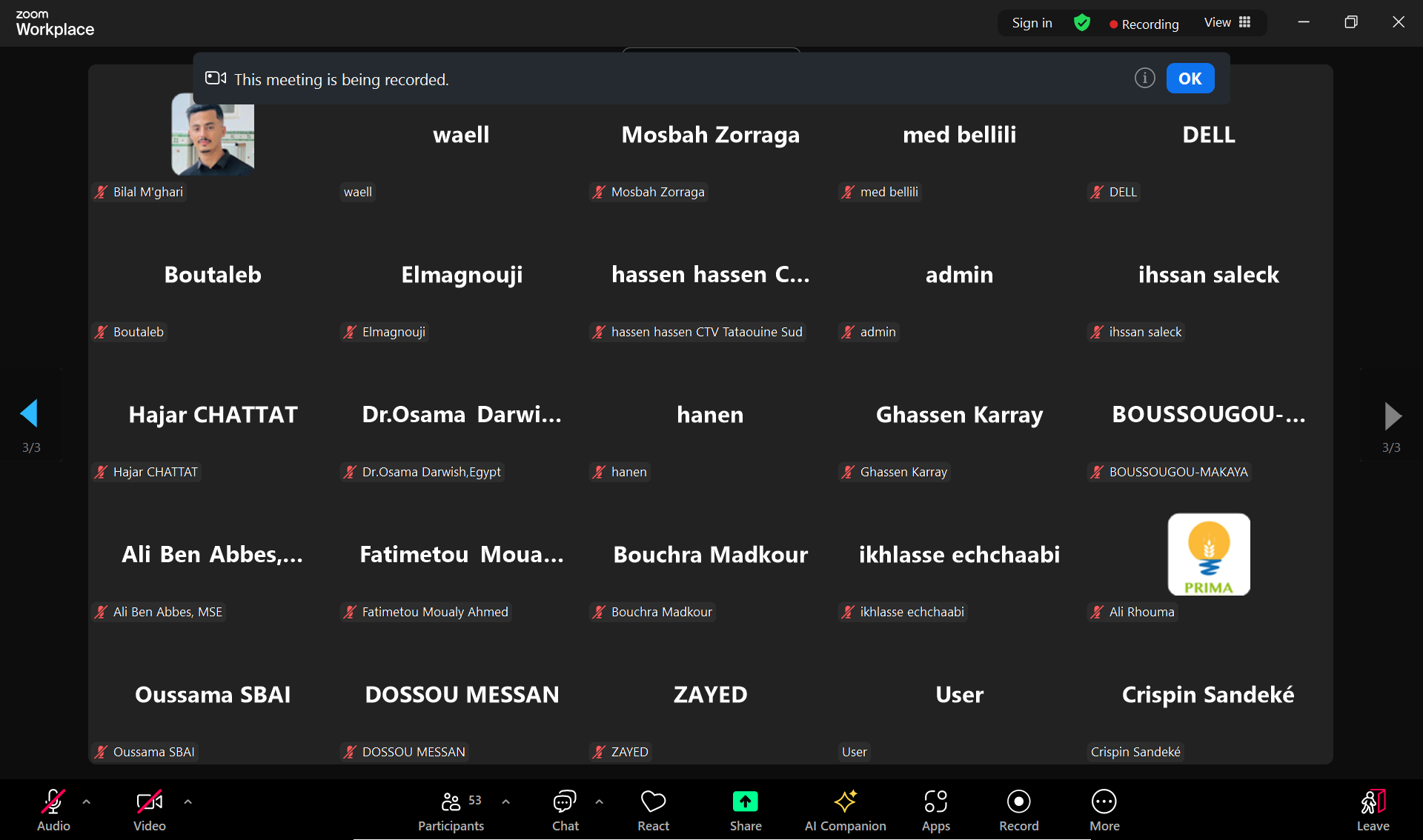

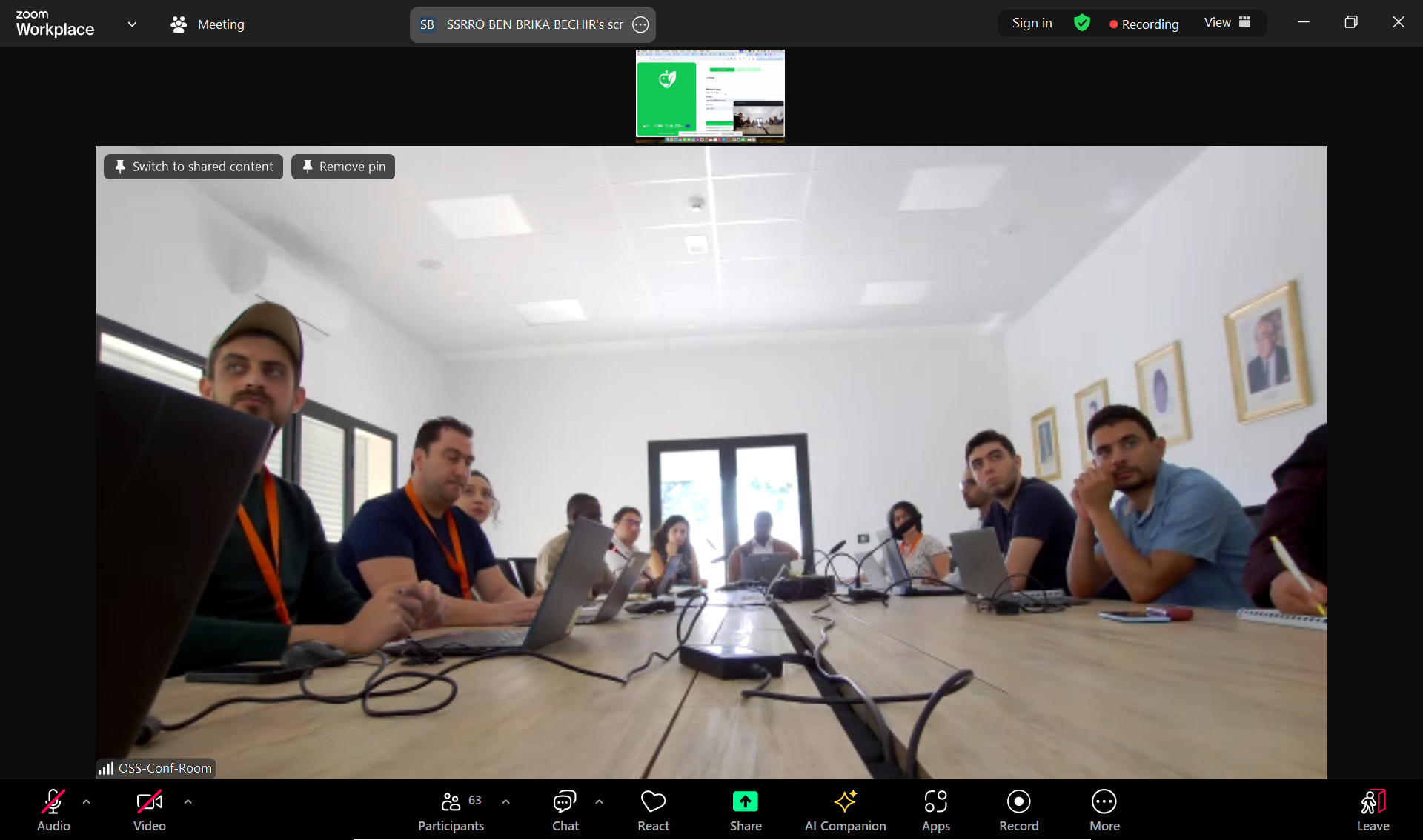
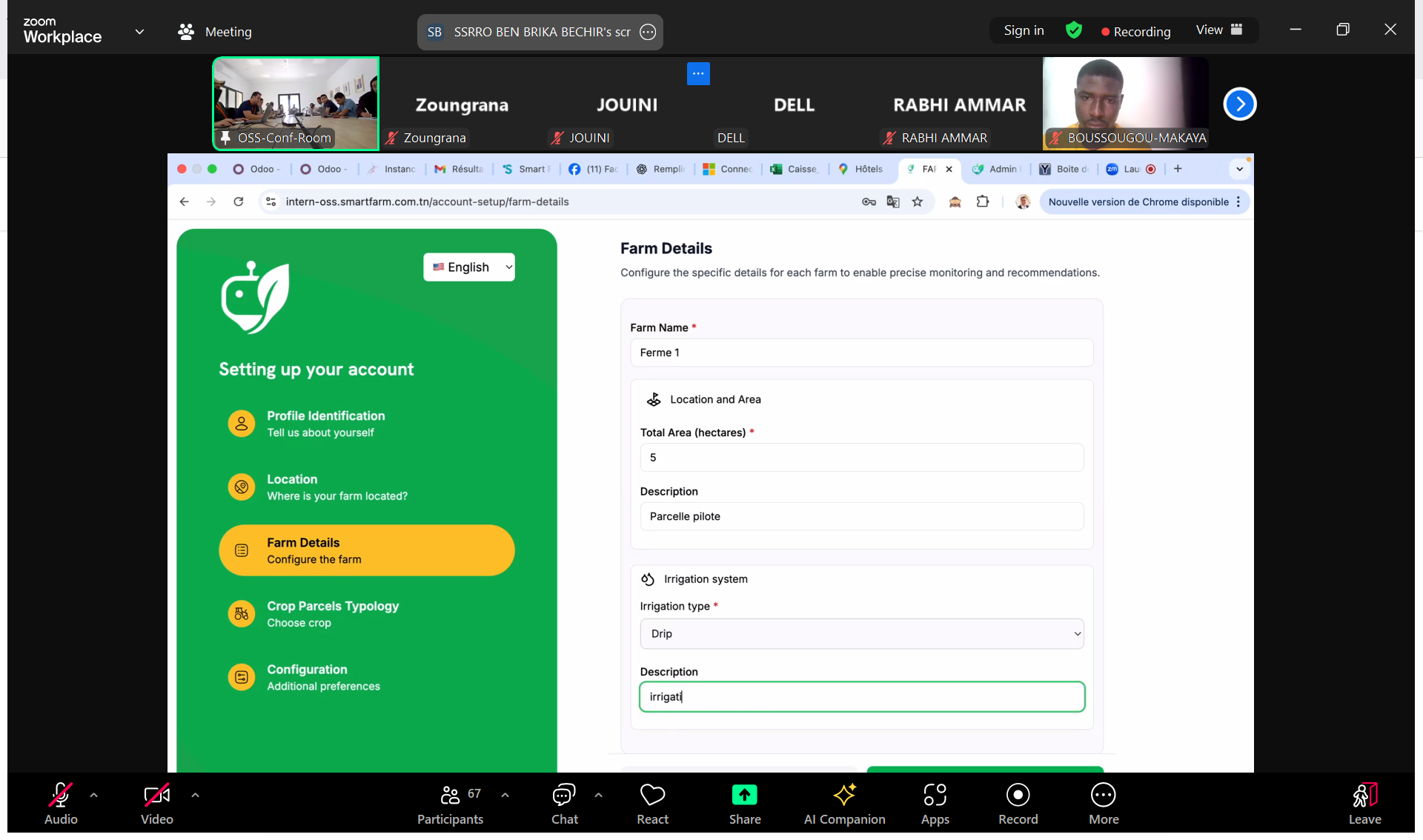
Tunis, October 22, 2025
The GMES North Africa Consortium officially presented FarmBot, an innovative artificial intelligence (AI) application designed to detect and predict diseases in key crops across North Africa, including wheat, barley, maize, chickpeas, fava beans, olive trees, date palms, citrus fruits, vines, tomatoes, potatoes, onions, and garlic.
Hosted by the Sahara and Sahel Observatory (OSS), the launch workshop gathered more than sixty participants from the African Space Agency (AUC), Consortium members (CNCT, CUCT, DRC, LRCSSS, CRTEAN, CRASTE-LF, and TENMIYA) - alongside partners and pilot users from several countries in the region.
In a context where agriculture remains the backbone of the North African economy and livelihoods, farmers continue to face recurring crop diseases and invasive weeds that undermine productivity. These challenges highlight the pressing need for technological tools capable of enhancing monitoring and anticipating phytosanitary risks.
To address this need, the GMES North Africa Consortium developed FarmBot, an AI-powered chatbot built on Sentinel–Copernicus satellite data. Combining machine learning with advanced algorithms, FarmBot provides real-time detection, diagnosis, and predictive insights to support proactive farm management.
The event not only demonstrated the application’s technical performance but also made it possible to exchange on experiences and perspectives of AI and geospatial data integration into agricultural monitoring.
Looking ahead, the OSS will lead the operationalization phase of FarmBot, launching a capacity-building program centered on practical use cases in multiple countries. A collaborative mechanism will also be established to gather user feedback, refine the tool’s functionality, and ensure its full deployment as a regional reference for smart agriculture.